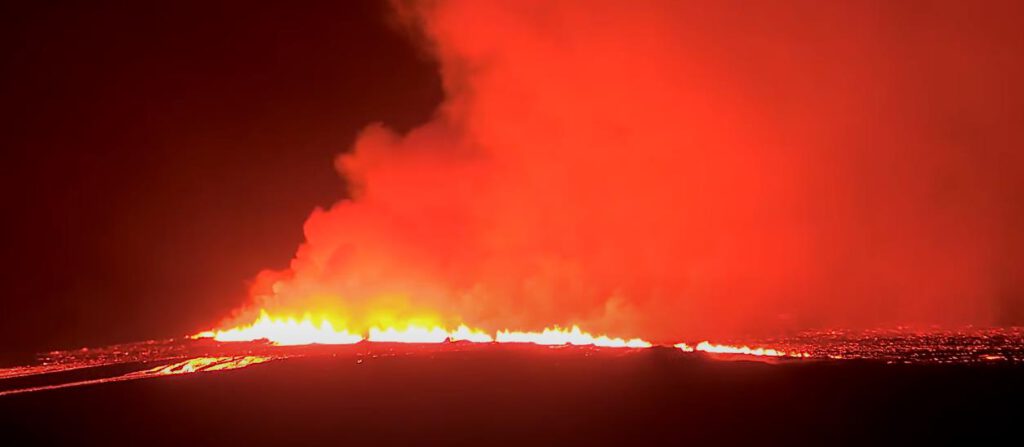On the evening of November 20, 2024, a new fissure eruption unexpectedly occurred along the Sundhnúkur crater row in Iceland. Volcanologists had not anticipated an eruption in November, as seismic activity had remained low in recent days. However, seismicity began to slowly increase by midday, without any clear warning signs. It wasn’t until 30 minutes before the eruption that a geothermal power plant operator reported rising pressure in boreholes, accompanied by a small earthquake swarm. The eruption began at approximately 11:14 PM local time.
A fissure approximately three kilometers long opened between Stóri Skógfell and Sýlingarfell. Three parallel fractures formed, emitting lava fountains. Two lava flows are moving north and west. The northern flow poses no threat to infrastructure, while the western flow is heading toward the Svartsengi geothermal power plant. Protective barriers are expected to shield the plant from the lava, which is advancing at a speed of 300 meters per hour. The main road to Grindavik has already been disrupted.
The intensity of the eruption remains uncertain. Although it appears smaller than the previous two eruptions, it could last longer, as more than 23 million cubic meters of magma have accumulated since September. The situation continues to develop unpredictably.
